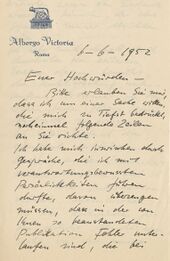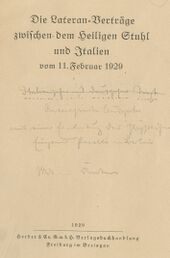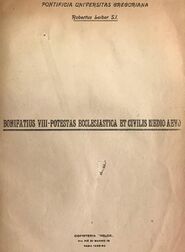Difference between revisions of "Robert Leiber Collection"
| Line 8: | Line 8: | ||
Seit September 2022 wird der Leiber-Fonds vollständig inventarisiert und digitalisiert. '''Daher werden Konsultationen und Anträge auf Reproduktion durch Forscher ausgesetzt'''. Der Fonds steht allen Wissenschaftlern offen, die sich bereit erklären, mindestens sechs Monate lang mit dem Archiv bei der Inventarisierung, dem Scannen und der Metadatenerfassung der Dokumente zusammenzuarbeiten. | Seit September 2022 wird der Leiber-Fonds vollständig inventarisiert und digitalisiert. '''Daher werden Konsultationen und Anträge auf Reproduktion durch Forscher ausgesetzt'''. Der Fonds steht allen Wissenschaftlern offen, die sich bereit erklären, mindestens sechs Monate lang mit dem Archiv bei der Inventarisierung, dem Scannen und der Metadatenerfassung der Dokumente zusammenzuarbeiten. | ||
|} | |} | ||
| − | + | {| class="wikitable" | |
| + | |- | ||
| + | | <center>If you are interested in participating in the project, individually or with your own research organisation, please submit your proposal for evaluation by filling in the [[Special:Contact|form]] or by writing to '''archivio@unigre.it'''</center> | ||
| + | |- | ||
| + | |} | ||
<gallery> | <gallery> | ||
Revision as of 16:36, 12 October 2023
| Da settembre 2022 il Fondo Leiber è oggetto di inventariazione e digitalizzazione completa, pertanto è sospesa la consultazione e la richiesta di riproduzione da parte dei ricercatori. Il Fondo sarà aperto a qualsiasi studioso che si impegni a collaborare con l’Archivio per almeno sei mesi nelle attività di inventario, scansione e metadatazione dei documenti.
|
| Correspondence | Works | Bibliography | |
|---|---|---|---|
Project Stages
- Conditioning and Conservation
Assessment of the state of conservation of the Fund's documents in order to intervene with targeted restoration, starting with the papers in a precarious state. The main damage is mechanical: tears, gaps and breaks in the edges of the papers.The documents, once numbered, will be cleaned using a dust collector, then interleaved and placed in conservation folders.
- The online epistolary
The digitized letters will be accompanied by metadata, which includes, in addition to the classical correspondence data, the key concepts and abstracts in English. On the GATE platform, it is possible to semantically annotate (planned entities: Names, Places, Works, Concepts) the texts, increasing the possibility of linking information and knowledge of a documentation that opens up a glimpse into the history of the Church in the 20th century. The letters of some correspondents (cf. the letters of Albrecht von Bayern) were used during seminars and teaching courses.
- Document Inventory
All the other material in the Fund will be described by means of an analytical inventory accessible online. Only part of these documents, selected by the APUG, may be digitized.
Copyrights
Unless otherwise indicated, all files and contributions (transcriptions, pages, comments) uploaded and submitted to GATE by administrators and users are considered to be released under the Creative Commons Attribution-NonCommercial-NoDerivatives 4.0 International License. All the rights on the images of the manuscripts or other documentation are property of the Historical Archives of the Pontifical Gregorian University (User:ArchivesPUG). If you need high resolution images for your publications or for other usages, please contact us using this form.Your contributions to GATE must be original or, at most, copied from public domain or similar free sources. Remember to always cite your sources and, more important, do not submit copyrighted work without permission.
Consistenza del fondo
Il Fondo Leiber si compone principalmente dei 14 faldoni di corrispondenza comprendenti oltre 3000 lettere.
Il resto del fondo ancora praticamente inesplorato, composto di un'altra decina di faldoni, si costituisce di appunti per le lezioni, bozze per articoli o conferenze, annotazioni bibliografiche, ritagli di giornale e estratti di rivista. Nel faldone XIX si segnalano i Registri delle lettere dal 1945 al 1967.
Gran parte di questi documenti presenta annotazioni manoscritte anche successive che testimoniano come questa documentazione sia stata un materiale di lavoro sul quale intervenire costantemente.
I documenti coprono un arco cronologico che va dagli inizi degli Anni Venti fino alla morte.
Dal punto di vista materiale si tratta di manoscritti, dattiloscritti (spesso stenografati) e stampati. Sono presenti pochissime fotografie o materiali in supporti diversi da quello cartaceo.
Fasi del progetto
- Condizionamento e conservazione.
Valutazione dello stato di conservazione dei documenti del Fondo per intervenire con restauri mirati, a partire dalle carte in stato precario. I danni principali sono di tipo meccanico: strappi, lacune e rotture dei bordi delle carte.
I documenti una volta numerati, saranno puliti tramite depolveratore, succesivamente interfoliati e inseriti in cartelline conservative.
Documenti oggetto di restauro: Adelkamp (A.IV.7)
- L'epistolario on line
Le lettere digitalizzate, saranno accompagnate dalla metadatazione che prevede, oltre ai dati classici della corrispondenza, l'inserimento di concetti chiave e abstract in inglese. Nella piattaforma GATE è possibile annotare semanticamente (entità previste: Nomi, Luoghi, Opere, Concetti) i testi aumentando la possibilità di collegamento tra le informazioni e di conoscenza di una documentazione che apre uno spaccato sulla storia della Chiesa del Novecento.
Le lettere di alcuni corrispondenti (cfr. le lettere di Albrecht von Bayern) sono state utilizzate durante seminari e percorsi didattici.
- Inventariazione dei documenti



